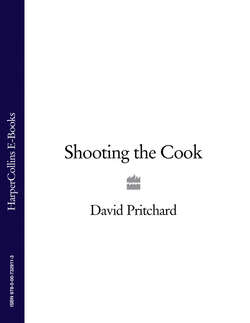Читать книгу Shooting the Cook - David Pritchard - Страница 12
Am I supposed to rehearse this? And do I need more than one fish?
ОглавлениеI used to have a recurring nightmare while learning the rudiments of rugby at school. I found the rules of rugby union extremely complicated, especially things like the offside regulation, and the fact that you had to pass the ball backwards to your teammates seemed totally unnatural. It seemed to me the game would be so much more interesting if you were allowed to throw the ball forwards. And as for scrums; what on earth was that all about? In my nightmare I would find myself playing for the England Colts at Twickenham, with the stands packed with young enthusiasts. I’d be fortunate enough to catch a high pass but would find myself stopping for a few moments to decide what to do. Should I run with the ball? Should I pass it back or kick it forward? In the meantime a whole mountain of flesh from the opposing side would fall on me and afterwards the scorn of the crowd and fellow members of my team would sound like 10,000 baying wolves. ‘Look,’ I would say, standing alone on the pitch, ‘this is very complicated. I was just trying to decide what was the best thing to do.’ Such was my quandary now.
Our very first location was at a fine restaurant in Devon called the Horn of Plenty and it was run by Sonia Stevenson, a lively woman with a cut-glass accent and a deep passion for food. She said she first wanted to be a cook when she started to make mud pies with her friends as a child. An assistant producer at Plymouth, Jeremy Mills, suggested we shoot there because of her formidable reputation as a cook.
Floyd and I drove through the high hedgerows of Devon to the restaurant. Bluebells, red campions and primroses lined the way as we crunched over the gravel that led to the entrance of this imposing Victorian house. Sonia was waiting on the front steps dressed in her chef ’s whites and looking very professional. Warming to the theme of our programme, she said she had chosen to cook hake in a lemon and butter sauce because the Spanish were nicking all these lovely fish from around our coasts and she wanted to show people how good they were. Splendid, said Floyd, rubbing his hands together.
We started to film and suddenly I realized why, until now, all those cookery shows had been recorded in a studio. With four cameras or so you can have a whole assortment of shots, from close-ups of the ingredients to a wide angle of the kitchen, as well as mid-shots of the cook and guest. But where was my one camera supposed to be looking? At Floyd’s face? At his hands? In the cooking pot? Where? The film was rolling through and I kept it on a shot wide enough to see Keith and Sonia plus the fish and the other ingredients. I think I had a touch of ‘rabbit in the headlights’ syndrome.
Apart from making a very short item with Floyd cooking his rabbit dish, I’d never done anything like this before. Fortunately I was saved by the cameraman, Malcolm Baldwin, suggesting that it would be quite a good idea to cut at this point and set up a closer shot of the subject, which was the fish. ‘Ah! I get it,’ I thought, as Sonia started to cut the hake into cutlets—but what happens next? It was a bit like a jigsaw puzzle, except you had to saw out the pieces personally before you began.
Day one of a new series, and technically I wasn’t up to it: it was a pretty cathartic moment for me. I could tell by the way Floyd was looking at me that he knew I’d lost the plot. I could feel the respect levels plummeting and I thought to myself, ‘I wish I hadn’t done this. I wish I hadn’t done this.’ A director has to be in charge, or everything spirals out of control.
I learnt a set of valuable lessons that day and they are: do a thorough ‘recce’ of the location; discuss in detail the actual cooking process, something you should be able to commit to memory; and make sure there’s another stand-in fish and duplicate ingredients so that you can film all the close-ups of the cooking process in beautiful back-lit photography later on. Also, if the camera is stuck on a tripod, there is very little it can do, whereas if it is handheld it becomes the viewer’s eager eye. I just wish someone had told me before. It would have saved so much pain and angst.
